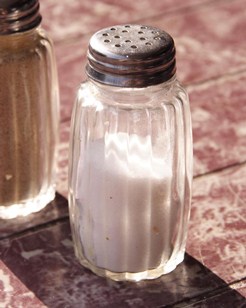More Than a Grain of Salt
30 March 2011
 Older Americans consume less sodium than Millennials, but all generations consume more than recommended, particularly according to the new USDA guidelines.
Older Americans consume less sodium than Millennials, but all generations consume more than recommended, particularly according to the new USDA guidelines.
The updated dietary guidelines, recently released by the United States Department of Agriculture, suggest a daily sodium intake of 2,300 milligrams for the average person, and 1,500 milligrams for ages 50+, but according to a new report from The NPD Group, a leading market-research company, all generations consume above those recommendations.
Seniors, born before 1946, and older Boomers, born 1946-1955, are on average consuming 2,912 mg. and 3,199 mg. of sodium daily, respectively, according to the report entitled “Sodium Concerns and Opportunities.” While still above the guidelines, these are the lowest levels seen among the generations. These age groups, which have a higher incidence of high blood pressure and other heart-health-related issues, also commonly check nutrition labels for sodium levels in the products they buy.
Younger Boomers, born 1956-1964, are not yet taking on the same behaviors as seniors and older Boomers in quite the same numbers in terms of sodium consumption. On average, this age group consumes 3,280 mg. of sodium daily. Over the next 10 years, however, this entire group will be over the age of 55 and may then have many of the same heart-related issues the older age groups have and will likely become more concerned about sodium.
Millennials, adults primarily in their 20s, consume the most sodium than any other generation: on average, 3,485 mg. of sodium per day. This age group also has the fewest health concerns and the most relaxed attitude toward sodium intake.
"The challenges in getting Americans closer to the guidelines are multi-faceted,” says Darren Seifer, food-and-beverage-industry analyst at NPD and author of the sodium report. “Salt is an important ingredient in making foods taste good. Simply removing sodium from foods and/or beverages will likely be met with consumer resistance. In addition, eating habits are difficult to change. We tend to change our habits when there is a present need, such as a medical condition, as opposed to eating right for the long term. Offering popular foods and beverages with lower sodium, while maintaining their taste profiles, is a good start in shifting current sodium-consumption behavior."
Photo credit: © Micha Fleuren | Dreamstime.com, http://www.dreamstime.com/stock-image-salt-pepper-rimagefree232233-resi1793763
